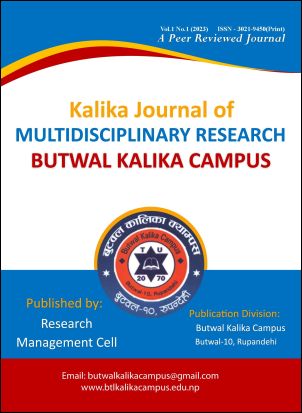The Bound Test Approach of the Money Demand Determinants in Nepal
DOI:
https://doi.org/10.3126/kjmr.v1i1.61502Keywords:
ARDL, Bound Test, Monetary, Money demandAbstract
The theory of money demand is an empirically tested theory of Nepal. It aimed at estimating the money demand function in Nepal. The causal research designs were used for the study. An annual time series from 1980/81 to 2021/22 was used as the data. The research used the Bound test and Auto-regressive Distributive lag model (ARDL). Moreover, a unit root test, bound test, stability diagnostic test, and normality test were used. The empirical result indicates the existence of both short-run and long-run relationships between money demand and real gross domestic production. Furthermore, money demand has a good short-run association with inflation and the consumer price index, whereas it has a long-run relationship. The disequilibrium is corrected in the one log period with a speed of adjustment of 0.75 percent. The study concludes an association between broad money supply and real gross domestic production in Nepal exists.




